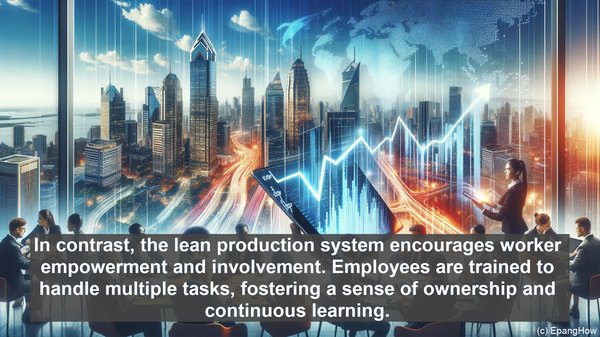Introduction: The Evolution of Industrial Production
Hello everyone! Industrial production has come a long way, from the early days of craftsmanship to the sophisticated systems we have today. Two prominent production systems that have shaped the industry are the lean production system and the mass production system. While both have their merits, they differ significantly in their approach and outcomes. Let’s delve deeper into their characteristics and understand their impact.
The Mass Production System: Efficiency at Scale
The mass production system revolutionized manufacturing in the early 20th century. It is characterized by the assembly line, where products move along a fixed path, and each worker performs a specific task. This division of labor and specialization allowed for high output rates, reducing the time required to produce a unit. By optimizing each task, the system achieved economies of scale, making products more affordable for the masses. However, it also led to a rigid production process, making it challenging to accommodate changes or customization.
The Lean Production System: Flexibility and Continuous Improvement
In contrast, the lean production system, popularized by Toyota, emphasizes flexibility and adaptability. It aims to eliminate waste in all forms, be it excess inventory, overproduction, or inefficient processes. The system encourages a culture of continuous improvement, where every employee is empowered to identify and address issues. By using tools like Just-in-Time production and Kanban, the lean system ensures that materials and resources are available exactly when needed, reducing inventory costs and minimizing the risk of obsolescence. Moreover, it enables quick changes in production, allowing for customization and responsiveness to market demands.
Quality Focus: The Lean Advantage
While both systems strive for quality, the lean production system places a stronger emphasis on it. By addressing the root causes of defects and implementing robust quality control measures, it aims to achieve zero defects. This focus on quality not only reduces rework and waste but also enhances customer satisfaction. In the mass production system, quality control often occurs at the end of the production line, leading to potential issues being identified late in the process, resulting in higher costs and customer dissatisfaction.

The Human Element: Empowerment and Skill Development
Another notable difference lies in the approach towards the workforce. In the mass production system, workers often have repetitive, monotonous tasks, leading to reduced job satisfaction and limited skill development. In contrast, the lean production system encourages worker empowerment and involvement. Employees are trained to handle multiple tasks, fostering a sense of ownership and continuous learning. This not only improves employee morale but also enables better problem-solving and innovation at the shop floor level.

